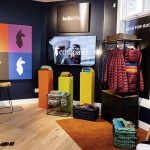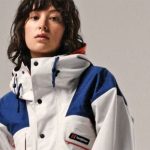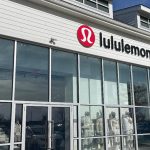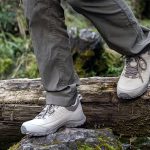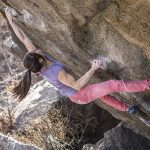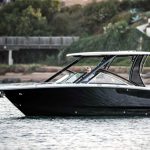At the Thomas Weisel Partners Consumer Conference this week, several major outdoor brands outlined success stories and provided a mostly positive outlook for the future.
Brands are clearly looking to owned-retail and expansion abroad to sustain growth as the U.S. economy teeterS, Under Armour CEO Kevin Plank noted, has the added benefit of helping keep product out of clearance outlets as the domestic economy weakens. The ultimate manifestation of this trend, of course, is owned-retail in China.
Most companies said they were getting little resistance to domestic price increases thanks to ample press coverage of inflationary pressure coming out of China.
Deckers Outdoor provided some of the biggest news of the week as they boosted its 2012 revenue target for the third time in two years, thanks largely to phenomenal growth of its UGG brand – and the addition of the TSUBO business. DECK now expects to hit $1 billion by 2012, compared to the $750 million forecast in November 2007. The new forecast will consist of $750 million in sales from UGG, $140 million from Teva, $75 million from Simple and $35 million from TSUBO.
Growth will come primarily from increasing UGGs offerings for spring, mens and childrens markets, rather than increasing distribution of the brand, which will remain controlled, said COO Zohar Ziv. Sales of UGGs spring line, introduced in 2006, were up 90% this year, proving the brand has traction outside its winter product he said. Going forward the line will use less shearling wool, which should improve margins. Deckers, which is now taking over international distribution of UGG from distributors, expects UGG to derive 30% of sales internationally by 2012, up from 15% in 2007.
Simple is expected to post 37% growth this year. DECK, which recently consolidated the brands UK design team into its operations in Santa Barbara, CA, will re-launch the eco-friendly brand in fall 2009. Deckers expects to take TSUBO, an urban casual line acquired earlier this year, from $10 million to $35 million by 2012.
The laggard will continue to be Teva, where sales are expected to remain flat this year. “What happened to the Teva brand — as the brand was growing and the products were not growing with it, it became, unfortunately, the brand of a middle-aged person like myself with a universal strap and white socks, which is not really a pretty sight, and Ill admit it,” said Ziv.
Zohar spent a lot of time talking about DECKs recently announced joint venture to establish retail and wholesale operations for UGG in China. The deal calls for Deckers to invest $5 million in a 51% owned joint venture with its largest contract manufacturer, Stella International Holdings Limited. The joint venture will open its first store in Beijing this. DECK has been doing business with the publicly traded Stella for 12 years.
“China is the third largest consumer of luxury goods in the world, after Japan and the US,” said Zohar. “All indications are that in seven to eight years they are going to be number one.”
Ziv said Deckers has its costs locked in through spring 2009 and is now working on Fall 2009 pricing with vendors. It raised UGG wholesale prices $10 for its current fall collection. On the accounts receivables, CFO Tom Hellebrandt said customers are taking longer to pay.
“People are starting to push things — payments out a little bit,” he said. “It’s not that we were seeing a lot of bad debt experience, but we are seeing a little bit of slowdown in the payables.”
Wolverine Worldwide, Inc. has not yet seen much negative feedback from domestic price increases. “I think the retailer and consumers in general have been conditioned,” Blake Krueger, company president and CEO. “They have read enough news articles that they all understood what was going on in China, they all understood that there [is] an economy growing there at an official double-digit rate, and [they understand] the inflationary pressures [China is] having ”
Krueger remains optimistic on the international front. “I would say a couple markets where were probably under-penetrated right now would be markets like Brazil and India, but weve got a robust business through distributors in Russia and Chile and in lots of other markets around the world.”
lululemon athletica has no plans to add manufacturing outside of China because the country is now the worlds leader in fabric and apparel technology, according to CEO Christine Day.
“Lululemon is constantly sourcing new fabric and new fabric technology,” Day said. “But what is interesting to us is that where the higher technology R&D capability is in China. So actually by staying it has created an open pathway for us working with the vendors and the manufacturers.” LULU recently form an R&D group in-house, but China is where the bulk of the innovation originates.
Day also confirmed that lululemon briefly considered purchasing Athleta, which was acquired last week by Gap, Inc. for $150 million in cash. Day, who came on board after the discussions, said she felt it was a smart strategy for lululemon to build their own e-commerce channel.
At VFC Corp. SVP and CFO Bob Shearer said VFC has locked in costs through the first half of 2009 at about 3% above the year earlier period with apparel suppliers. Costs rose a little bit more with footwear suppliers.
The focus at VFC continues to be growing its lifestyle brands from a little less than 50% to 60% of sales. Much of the growth will come from Vans and The North Face, which now account for 25% of revenue and 60% of international revenue.
Shearer said VFC sees immediate opportunity in taking Vans beyond Southern California. He said about half Vans revenue come through company-owned stores.
“There is the rest of the U.S. to penetrate and we are now opening stores and testing store formats,” he said. “Obviously where we see strength in skate we are testing those formats in areas like Texas and Florida, the Northeast. We have one of our best-performing stores in San Francisco right now.”
On the acquisition front, VFC remains interested in buying well-run companies to expand the Outdoor Coalition, which boasts a 15% operating margin. Shearer said the company does not need acquisitions to hit its growth targets, is not interested in pursuing “fixer-uppers” and believes valuations will only get better with time.
“We are seeing clearly some moderation in terms of multiples for the better businesses, the faster grower, the more profitable businesses,” said Shearer. “We are seeing some moderation. We can be patient relative to a little bit more moderation in multiples.”
Under Armour Founder and CEO Kevin Plank spoke about the companys move into footwear. The company has held that the best growth opportunities are in cleat footwear for baseball and football as well as running shoes. UAs footwear sales grew 30% in the second quarter.
Under Armour will launch a running shoe line in the first quarter of 2009 using a marketing campaign targeting younger, less traditional consumers. Under Armour will also launch footwear products in Europe in the quarter.
By the end of 2008, UA expects to have 26 factory outlet stores, which management said will protect the brands integrity by keeping excess product out of undesirable retail channels. UA currently operates 17 outlet stores. Plank said UA will complement its first full-priced retail store in Annapolis, MD this year with three to four more stores.
Plank said the companys unique “five lever” model enables it to continue growing in the United States beyond the second quarter. Those levers are the mens, womens, international, direct-to-consumer and footwear. Plank said he expects womens becoming UAs largest category. UA posted sales gains of 30% in the second quarter with 94% of the growth coming from domestic sales.
Management reiterated its plan to attain growth in operating income of 13.5% in the near future and 15% long term.
At Cabelas Inc. the emphasis continues to be on leveraging all three channels – retail, direct and financial services, CEO Dennis Highby said at the Thomas Weisel Partners Consumer Conference in New York. To accomplish this, the company must improve merchandise flow in within retail stores.
The company, which recently began offering in-store pickup to its direct customers, plans to improve its customer relationship management system and continue refining its merchandise planning system before FY 2009. Management thinks it can boost comps by putting an increased emphasis on circulars and direct mail advertising.
Cabelas also plans to open slightly smaller retail locations in the future, according to an Associated Press account. Highby was quoted by the AP as saying the new stores will follow three size formats ranging from 80,000 sf to 125,000 sf. Current stores average about 140,000 sf, although its largest location is 245,000 sf. Cabela’s opened eight new stores last year, but only plans to open two this year and no further store openings planned in 2008. It expects to open between two and three sites in 2009.
CFO Ralph Castner said Cabelas is encountering increasing spreads on financing. “There are some things were doing to try to combat [increasing spreads] from a pricing standpoint, mainly in the pricing of some of our credit cards, we are adjusting that. Were also looking at introducing some new products which will have higher yields to help offset those higher spreads.”
In 2007, Cabelas – which owns its own bank – reported nearly a million active accounts with average balances of $1700. Its financing operations generate $159 million in revenue that year.
Regarding the companys cash position, management expects to conclude the year with roughly $50 million in inventory.
Team Sports dealer Sport Supply Group said it has reached an agreement with Nike that allows it to sell their products via catalogue and online for the first time.
“We see that as [the] next big catalyst for our company,” said Chairman and CEO Adam Blumenfeld. “In the back half of 2009 we will be able to offer their product through catalog and telesales. This is a transformative event. It allows us to become a one stop shop. It is a significant elevation in relationship with Nike.”
The addition of Nike will help RBI solicit new accounts, which they will soon be able to fulfill through the online and catalogue channels. Roughly 25% of RBIs orders, including half its road sales, are now entered online, up from none five years ago. RBI currently gets $100 million of its sales through its sales force and $150 million from its direct channels.
Blumenfeld said RBI is well positioned to grow as team dealers struggle to adapt to changes coming out of Asia. The company is already picking up business from larger team dealers who are finding it increasingly difficult to buy product directly from Asian suppliers. “We think getting access to product is going to become a real problem as Asian inflation feeds into this market,” said Blumenfeld.
“Weve already seen it,” said Blumenfeld. “Weve seen cataloguers and team dealers be unable to obtain product from Far East and come to people like us to find that product. So built into our model is the role of playing middle man to folks and I dont think its a short term problem. Asia is not wanting to make short runs of private label product for distributors. They want payment up front. Massive change is gong on and it has resulted on first swipe in dramatic increases in pricing – much more so for smaller players than larger.”
RBI is benefiting from this trend by providing warehousing and fulfillment services to larger team dealers. But it also stands to benefit if weaker mom and pop dealers fail and relinquish their sales people.
“We have 200 road men today and we are in a position to acquire those salesmen and add their books of business,” he said of impending defections and lay offs. “Tactically and strategically it is a good idea.”
Volcom, Inc. CFO Doug Collier estimates that about half of Volcoms business comes from young mens wear, about 30% from young women, and 10% from snow. The company intends to keep that balance going forward. “There is potential to grow our footwear business, to grow our boys business a little more, weve got girls swim But overall I think the mix is going to stay pretty much the same its stayed historically.”
As Volcom expands its European business, Collier says that they will analyze how to grow in each country on an individual basis. European distribution probably wont happen until next year, when the focus will likely be increased distribution to France, Spain and Germany.
Volcom has acquired the Japanese distributor they have been doing business with for almost 15 years. While the distributor has done a “very good job of presenting and preserving the brand in distribution,” Volcom has stepped in to improve their Japanese business with new styles and color trends, Collier said.






